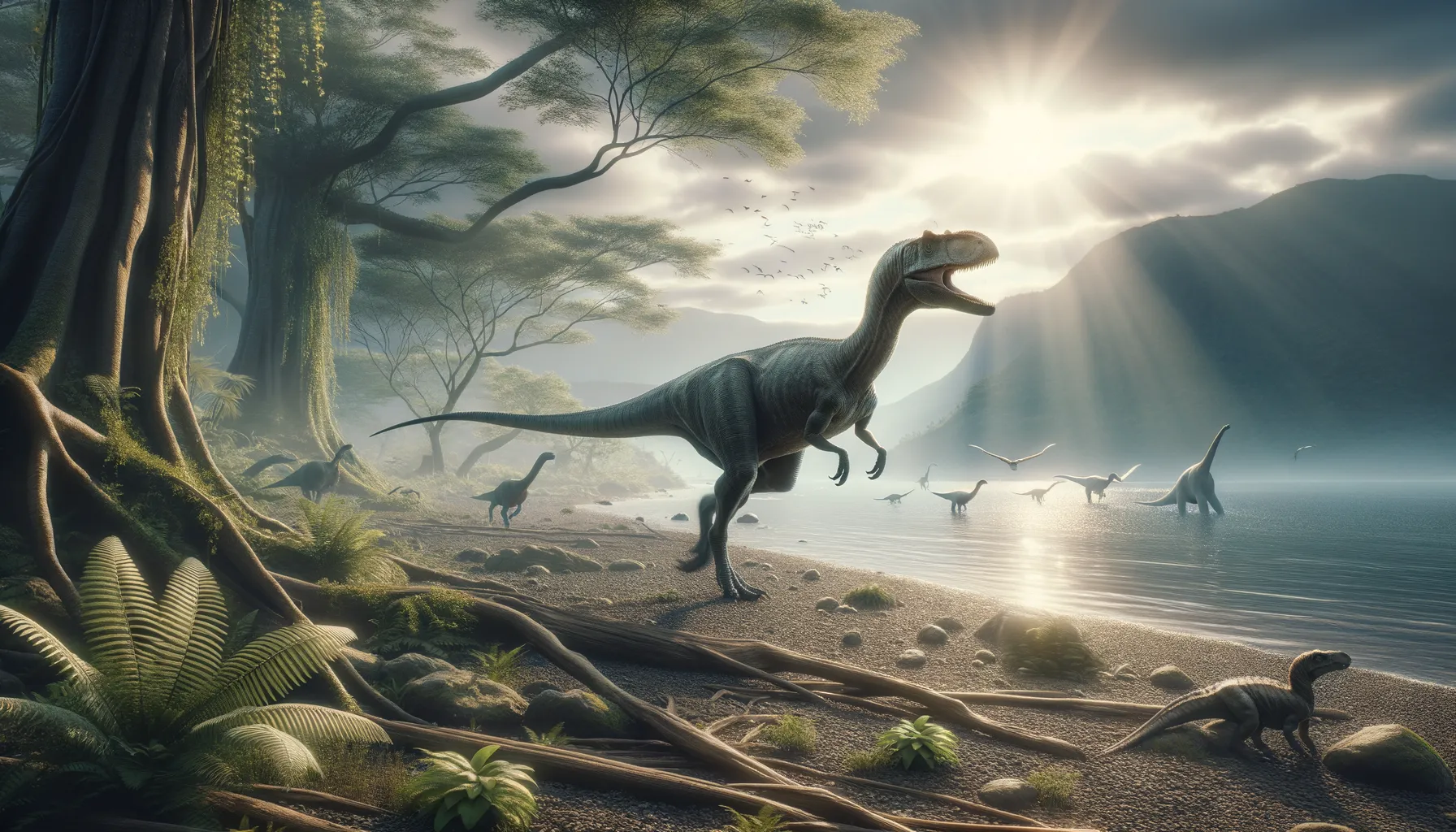
Coelurus
Swift predator of the Jurassic era!
Period
Jurassic
Length
Roughly 2.5 meters long.
Height
Around 1.5 meters tall at the hip.
Weight
Approximately 20 to 30 kilograms.
Coelurus was a small, lightweight dinosaur that lived during the Jurassic period. Known for its slender build and long legs, it was well-equipped for a life of agility. Although not one of the more famous dinosaurs, its anatomical features have provided insight into the evolutionary links between different theropods. Its fossils have been crucial in understanding the diversity of dinosaur species during its era.
Diet
Coelurus was likely a carnivore, feeding on small animals and possibly insects. Its agile movements would have allowed it to catch prey efficiently, relying on its speed and stealth.
Hunting
Coelurus probably used its speed to outrun or ambush prey. It may have hunted alone, stalking small creatures in its environment with quick, nimble movements.
Environmental challenges
Coelurus likely faced challenges from larger predators that roamed its habitat. Weather conditions could also have posed risks, impacting food availability. As a small dinosaur, it had to be vigilant and adaptive to survive various environmental pressures.
Speed
Moderate runner, agile and nimble.
Lifespan
Probably around 10 to 20 years.
First discovery
First discovered in 1879 in Wyoming, USA.
Fun Facts
- Coelurus was one of the first dinosaurs to be named from the Morrison Formation of North America in the late 1800s.
- The name 'Coelurus' means 'hollow tail', referring to the hollow bones in its tail that made it light and agile.
- It lived during the Late Jurassic period, around 150 million years ago.
- Coelurus was a relatively small dinosaur, estimated to be about 6 to 7 feet long, similar in size to a large dog.
- Despite its small size, Coelurus had very long legs, suggesting it was likely a fast runner.
- Fossils of Coelurus have been found in Wyoming, making it an American dinosaur.
- Coelurus is often overshadowed by its larger and more famous neighbors like Allosaurus and Stegosaurus in the Morrison Formation.
Growth and Development
Coelurus likely hatched from eggs and experienced rapid growth. During the early stages of its life, it would have been vulnerable to predation, relying on concealment and quick reflexes. Its structure suggests it reached maturity by enhancing its speed and dexterity.
Habitat
Coelurus lived in open, semi-arid environments with a mix of forests and plains. Its habitat provided a mix of cover and open spaces for stalking prey. Vegetation may have offered both shelter and obstacles to navigate.
Interaction with other species
Coelurus had to coexist with larger predators, possibly being both predator and prey. It may have competed for resources with other small theropods. Interaction with herbivores might have included scavenging opportunities.
Natural lifespan
Coelurus may have lived naturally up to 20 years in a safe environment.
Reproduction
Coelurus reproduced by laying eggs, possibly in simple ground nests. Parental care, if any, remains uncertain due to scarce evidence. Egg clutches might have been small given its size.
Social behaviour
While little is definitively known, Coelurus may have been solitary or lived in small groups. Social interactions might have included competition for mates or territory.
Fossil locations
Coelurus fossils have predominantly been found in the Morrison Formation in Wyoming, USA. This region has provided critical samples for studying the Jurassic ecosystems. Discoveries have helped clarify its place in the evolutionary timeline.
